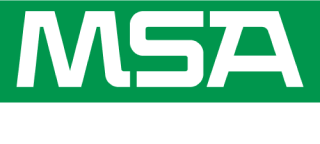

Facilities management (FM) plays a crucial role in helping ensure the smooth operation of commercial buildings and facilities. FM teams are usually responsible for hiring and managing various contractors to address repair and maintenance issues. However, this aspect of FM can come with certain requirements, such as complying with Occupational Health and Safety Administration (OSHA) regulations, and inherent risks, such as managing on-site contractors and potential facility hazards.
First and foremost, failing to comply with applicable OSHA standards can result in significant penalties, legal consequences, and reputational damage for your organization. Integrating compliance measures into facilities management practices can help mitigate risks and ensure a safe working environment for employees, contractors, and visitors.
OSHA Compliance
OSHA regulations cover a wide range of health and safety requirements, including but not limited to:¹
-
Hazard Communication
The intention of this standard is to help ensure that employers and employees know about the potential of hazardous chemicals at the worksite and the steps to take to protect themselves. FM teams are required to develop and implement a written Hazard Communication Program and comply with additional aspects of the standard.
-
Personal Protective Equipment (PPE)
Facilities managers must ensure that appropriate PPE is provided and used correctly by employees and contractors when conducting work on-site. This includes conducting regular assessments to identify PPE needs, providing training on proper usage, and monitoring compliance with PPE protocols.
-
Electrical Safety
Wiring deficiencies are one of the most-frequently cited hazards by OSHA. FM teams should conduct routine inspections of electrical systems, equipment, and wiring to identify any potential risks.
-
Fall Protection
Working at heights poses a significant risk in many facilities. FM teams must implement effective fall protection measures, such as guardrails, safety harnesses, and proper signage. Regular inspections of fall protection systems and ensuring that employees and contractors receive appropriate training on fall prevention can help support compliance.
-
Recordkeeping and Reporting
OSHA requires that many employers provide accurate and up-to-date recordkeeping of workplace injuries, illnesses, and incidents. Facilities managers should maintain detailed records of incidents, including near misses, and report them as required. Integrated FM platforms can streamline this process by providing a centralized system for incident reporting, tracking, and analysis.
Contractor Management
One of the major challenges often faced by FM teams when working with on-site contractors is compliance with corporate policies, and holding proper insurance and relevant credentials. Uninsured or uncredentialed contractors accessing company locations can pose a significant risk. To address this, FM teams can leverage integrated FM platforms that enable the real-time monitoring of contractors regarding relevant information, such as that contracts, insurance, and credentials are up to date.
Planning ahead for contractor PPE needs can help ensure you have enough supply of the right PPE for the job.
Health and Safety Risk
FM teams can have a vital role in preparing for and managing potential facility risks that could jeopardize employee, contractor, and customer safety. Establishing standardized procedures and systematically recording the actions taken can help mitigate longer-term risks.
Conducting safety inspections across locations is often a key part of a FM team’s function. To help ensure consistency and thoroughness, FM teams can employ trained safety professionals to conduct comprehensive site inspections with documentation identifying safety hazards and recommendations for PPE and processes to help reduce risk and improve compliance.
FM teams should be prepared to anticipate even the most unexpected on-site emergencies. This includes familiarizing contractors with emergency procedures and providing access to location maps, exit points, and evacuation routes.
Solutions for Integrated Facilities Management
Consolidating facility management efforts under a single, unified team can help drive efficiency, improve safety, and simplify compliance. When selecting a partner to help transform your FM efforts, consider both their safety expertise and ability to supply the PPE and safety products needed. MSA solutions range from consultative services to protection and detection equipment that can help support on-site contractor safety, facility safety, and OSHA compliance.
Solutions include:
- On-Site Inspections and Hazard Assessments
- MSA and our authorized Integrators and Partners can perform hazard assessments and recommend application specific solutions.
- Latchways® Vertical Ladder Lifeline Kits
- Allows for hands-free movement up and down the entire height of a fixed ladder, eliminating the need to disconnect and find new tie-off points while ascending or descending.
- XTIRPA™ Confined Space Entry System
- Provides vertical or horizontal entry into many common confined space applications such tanks, vessels, transformers, sewers & manholes. The system is lightweight, portable and easy to set up.
- ALTAIR io™ 4 Gas Detection Wearable and Grid
- Designed to be worn by individual workers, the ALTAIR io 4 device offers automatic cellular connectivity right out-of-the-box, to deliver real-time data including worker location and detector usage. With Grid, you get real-time visibility across your worksites—including workers and workflows—accessible from anywhere with an internet connection via desktop or mobile.
- V-SERIES® Fall Harnesses
- Provide superior comfort and increased flexibility, with a racing-style buckle and pull-down adjustment that helps workers get the right fit that lasts throughout the shift.

Integrated facilities management can help mitigate risks in three key areas: OSHA compliance, contractor management, and health and safety. By implementing standard procedures, sourcing appropriate PPE and safety equipment, and partnering with the right safety expert, organizations can help enhance their risk mitigation strategies and maintain a safe working environment.







